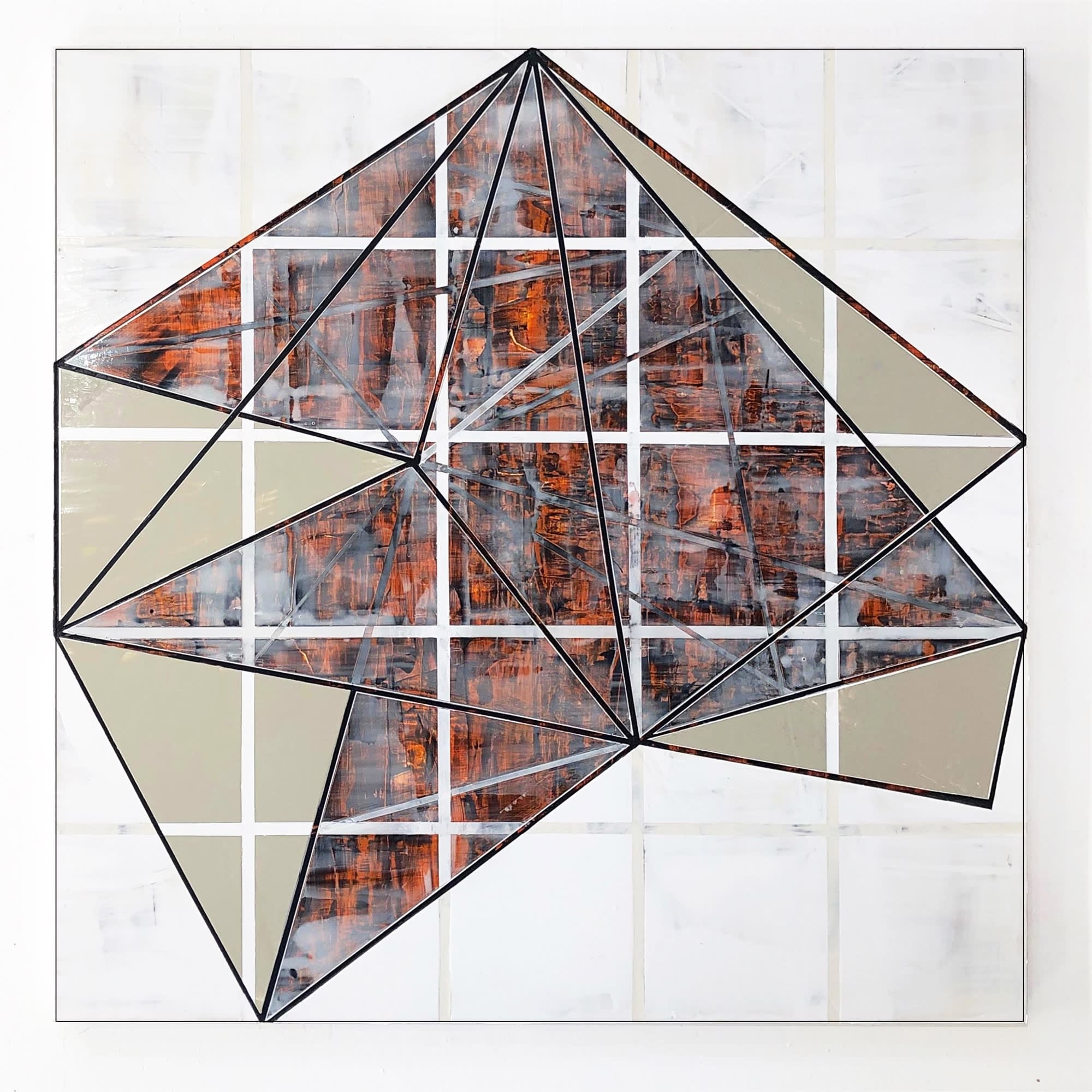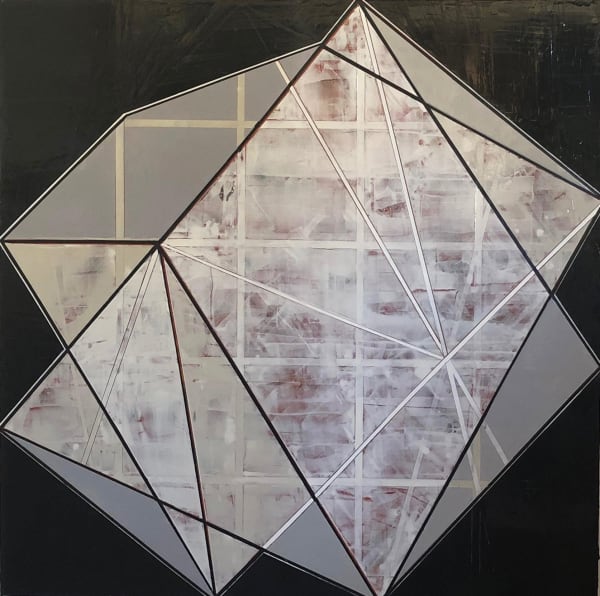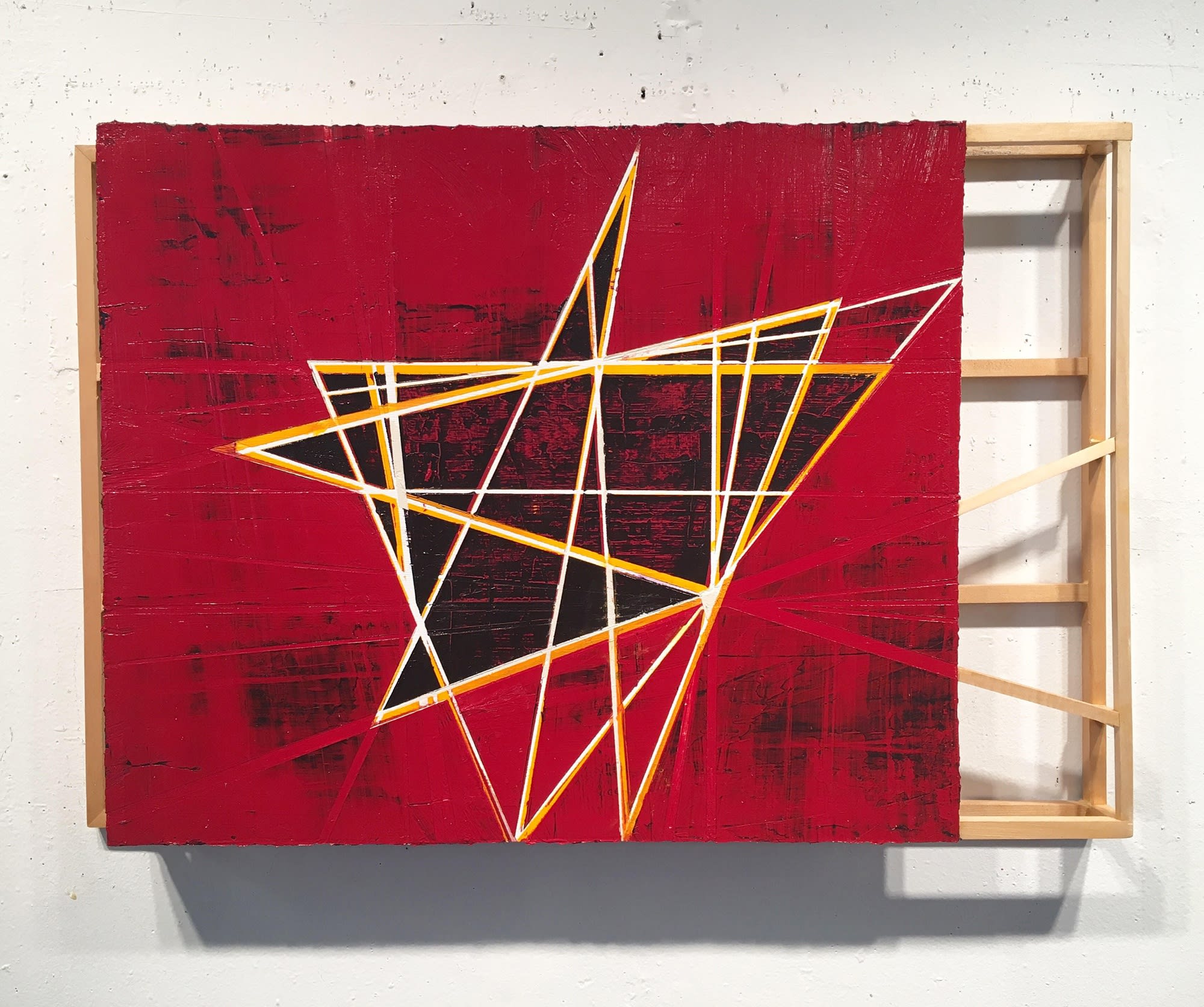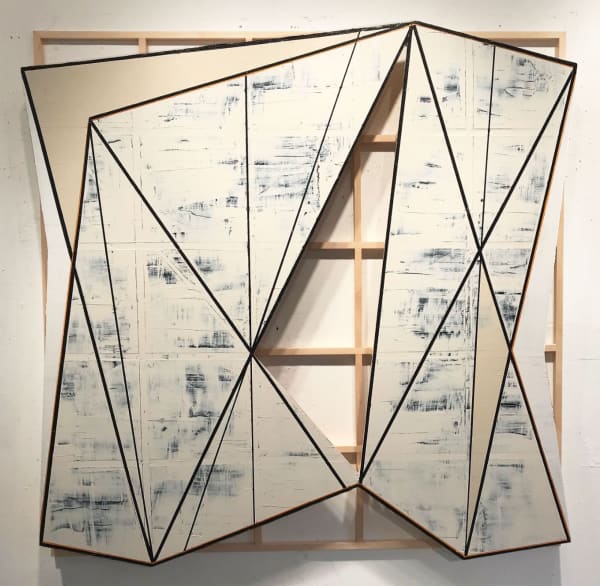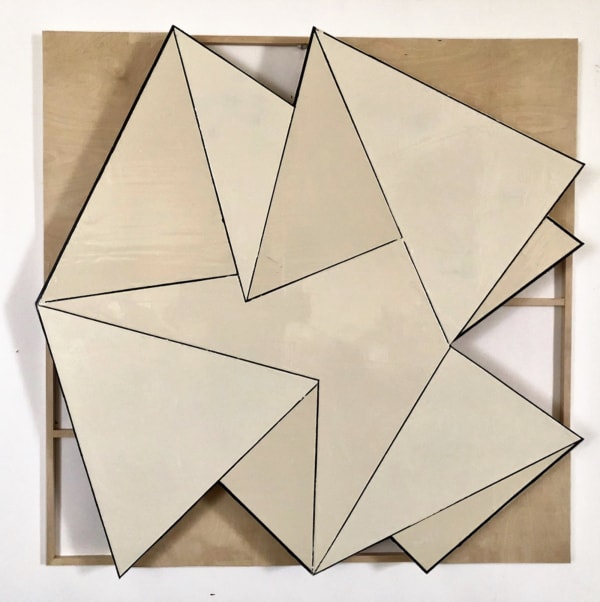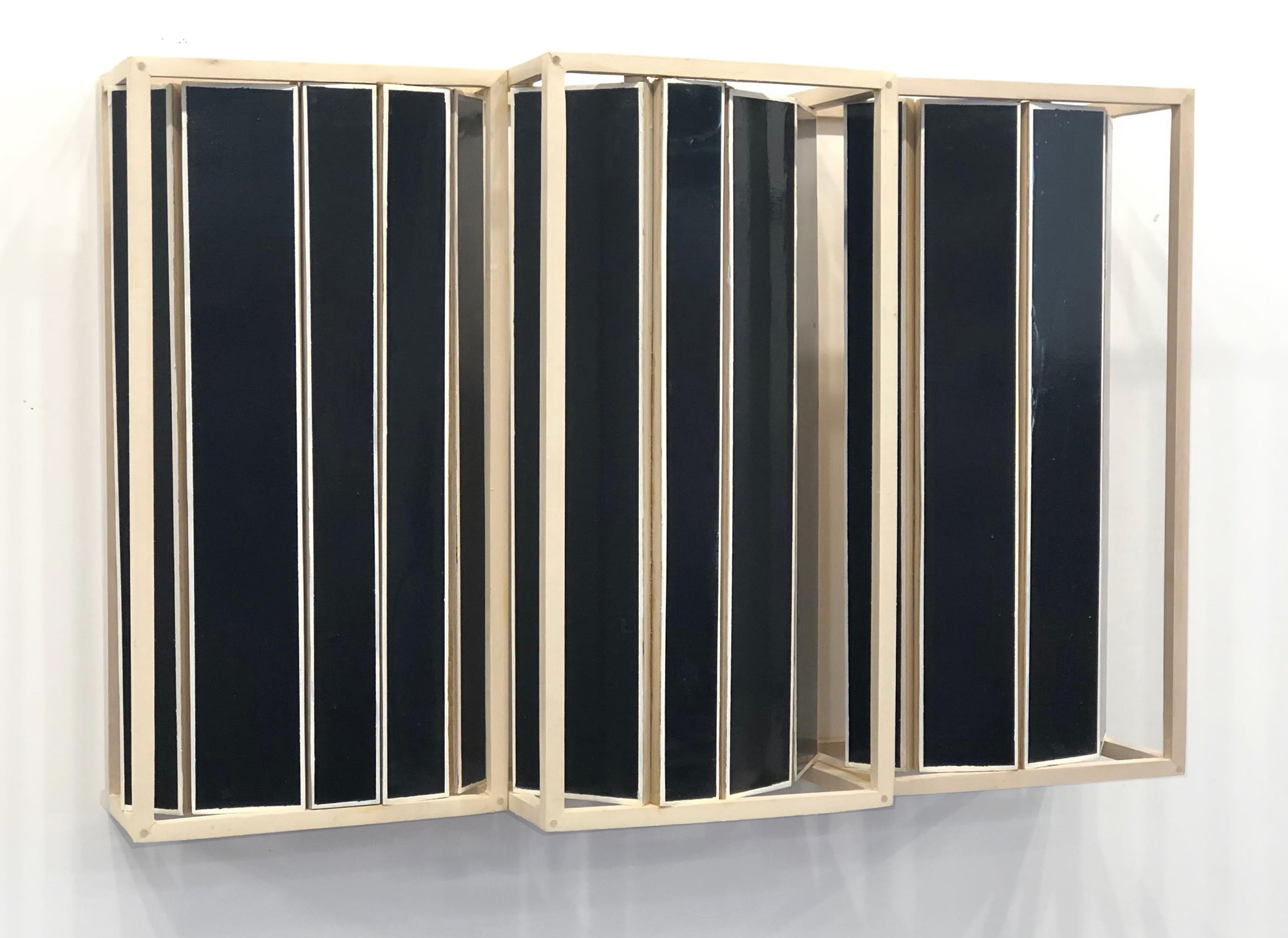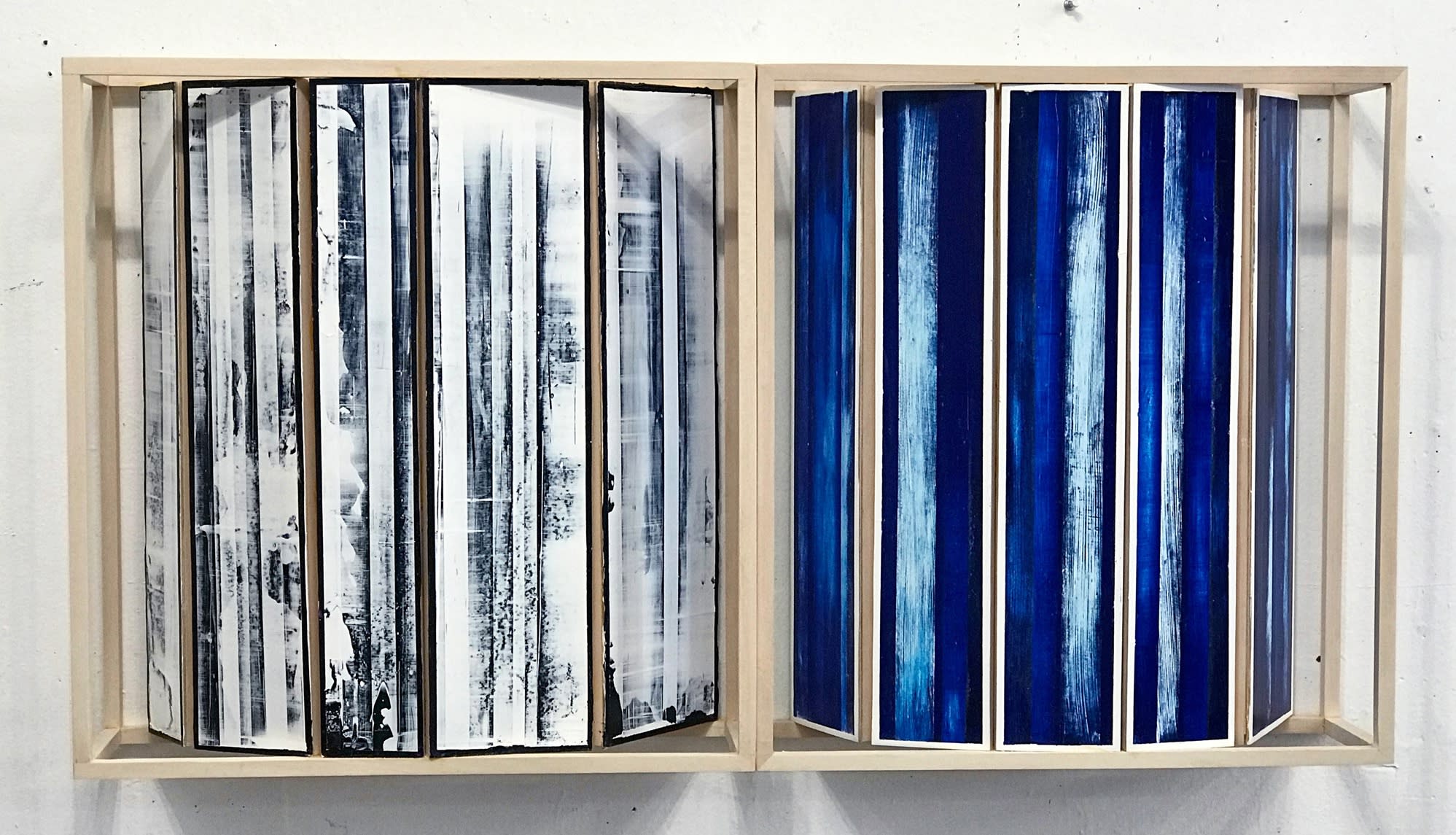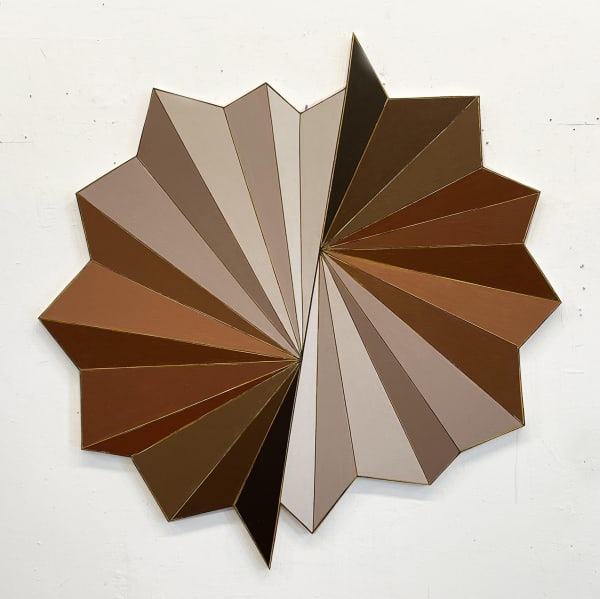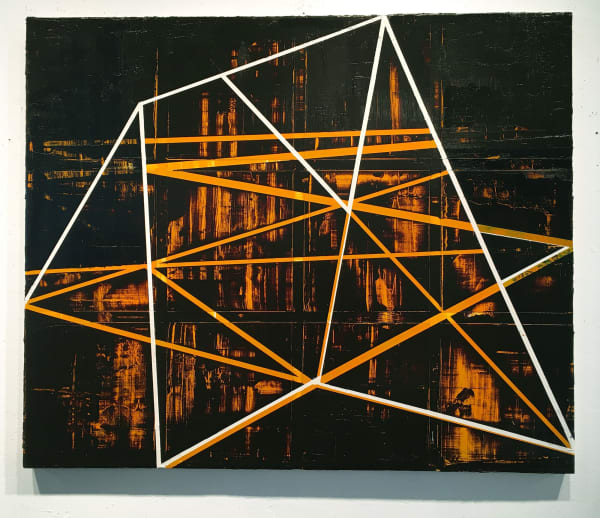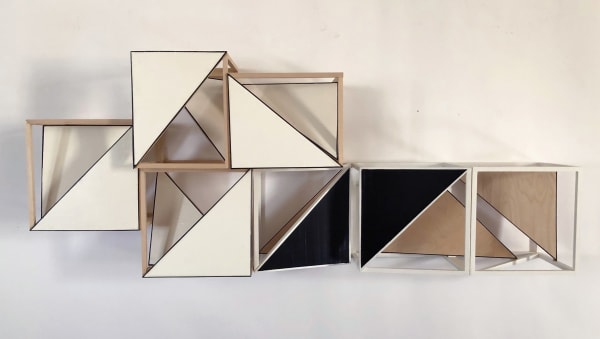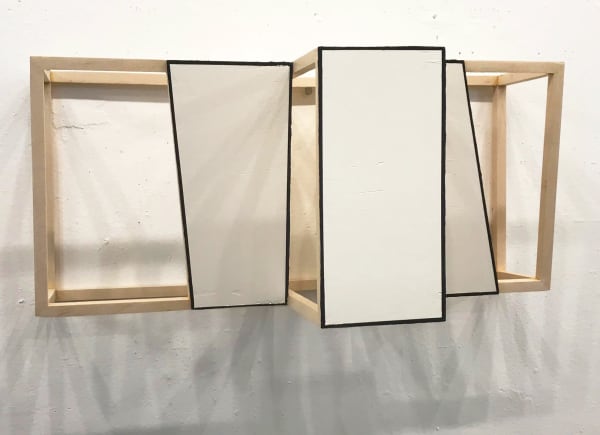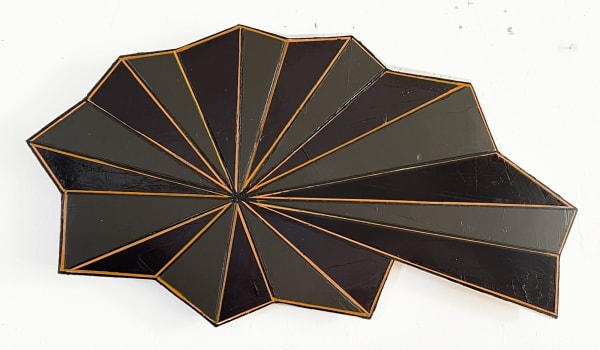-

-
-
This is a partial retrospective of the last decade in Howard Hersh's long artistic career that marks a turning point and the genesis of a prolific phase bursting with creativity, boundless energy, and inventiveness. This exhibition takes place during COVID-19 pandemic and lockdowns, a crisis that has awakened a renewed interest in Minimalist art and the realization that less is more. This realization reverberates throughout our daily life and the economy. Through a narrow lens Less is More: The Case of Minimalism examines Howard Hersh's personal philosophy of No Separation and Minimalism. No Separation is his guiding principle that informs his life and art to simply say: "it's all connected!"
Minimalism is understood as an extreme form of abstract art developed in the USA during the 1960s consisting of artworks composed of simple geometric structures, squares and rectangles. With minimalism, no attempt is made to represent an outside reality. The viewer is only required to respond to what is in front of them as revealed in the medium or form. Hersh fits neatly with the leading minimalist artists as Ellsworth Kelly, Frank Stella, Sol LeWitt to name just a few.
-
Hersh’s flirtation with this radical form of art is undisputed. Each of his series shows a progression and a dynamic that manifests itself in infinite possibilities of growth and expansion. Axis Mundi, Skin Deep, Roundabout and Migration capture this essence. His minimalist visual language includes drawing lines, constructing grids, creating symmetrical and asymmetrical forms, cubes and modules ripe with endless permutations. Of note are the limited color palette and the use of a scraping technique, which removes layers and leaves markings as in a road map.
Throughout, Hersh’s visual language and tools aim to remove all excess and becomes both transparent and revealing. The elimination of excess is a subtle call to resist consumerism and make a stunning statement of the post Covid-19 era. The past year has demonstrated a reliance on less and highlighted how we are all globally connected. There is merit and urgency in continuing this conversation about the meaning of less is more. Hersh leaves us with a bonus of an arresting aesthetic that he can call his own.
-
-

-
"Humans are a diverse and complex creation. So, it’s no surprise that I would pursue my goal of expression by way of several disparate series. I think of this in terms of a many faceted stone. Reflecting different views from within, the artist similarly spins off ideas, feelings, and concepts that require more than one point of view. While Structure is my focus, its ubiquity calls for an examination of itself in more than one way."
- Howard Hersh
-

-
"Axis Mundi is a series of 2D paintings, where the structural imagery is illustrative. I’m concentrating on the physicality of painting in this series. I see myself as the axis between heaven and earth, between the artists’ intentions and their creations."
- Howard Hersh
-

-

-
"Skin Deep is a series I started almost ten years ago. I began by expanding the ideas of structure beyond mere presentation, into letting the structure break out of the picture, creating a structural object. The title, Skin Deep, refutes itself, as the works depth and presence imply there is much to behold under the surface."
- Howard Hersh
-

-
Hersh is wrestling with a fundamental inquiry into the nature of painting and questions the notion that paintings exist as pictures of something -- illusions --while sculptures exist on their own, as objects. By reaching under the skin to reveal bare bones or the structure of his three-dimensional paintings, minimalist principles are at play. Hersh comes close to Ellsworth Kelly‘s belief that paintings are not about expressing emotion, creating concepts, or telling a story with art. He directs our attention to the form and strips them of any reference to portraying objects. What Hersh offers us are, in his words, “structural objects”.
-
In his paintings, Hersh makes good use of color limiting his choices to primary and secondary colors. It evokes one of Wassily Kandinsky’s Bauhaus theories that sets in motion beliefs that art can provoke emotional, psychological and physical responses. Kandinsky observed that yellow has the ability to disturb, while blue creates an awakening of spirituality and spiritual awareness.
-

-

-
"The Migration series began in 2018. The title refers to movement. A broad term that’s used in many contexts, but for me, Migration is the meandering from painting to sculpture (and back). Movement and change are very much what artmaking entails. We must position ourselves by refreshing and evolving, not necessarily “holding our ground.”"
- Howard Hersh
-
CURATORIAL COMMENT
In Migration, the minimalist approach acquires a new look as Hersh crafts cubes, building modules and placing the structures on the floor. He limits his palette just to black and white. This preference directs the viewer’s attention to form, texture, mark making, and symbolic meaning. The use of black alone is visually striking, elegantand radiates sophistication. It performs an interactive function as well.
-

-
At this juncture, it’s fitting that we remember Marcel Duchamp’s argument that both the artist and the viewer are necessary for the completion of a work of art. Duchamp posited that the creation of art begins with the artist—often working in isolation in the studio—and is not completed until it is placed out in the world and viewed by others.
-

-
"Roundabout, my most recent series, takes the subject of Structure into a more playful realm. The concept of a continuous and perpetual journey, one with many entrances and exits, is a fitting description of an artist's path.
This is a lifework that I happily embrace."- Howard Hersh
-
-
In Roundabout, Hersh extends his minimalism from the Skin Deep series by uniting art and crafts to build his 3D-structures. This is definitely a holdover from the Bauhaus School of Design. He infuses the Roundabout with a minimum of three colors to define space and achieve the mystery and magic of perception. Josef Albers' theory of color relativity is tested revealing transformation based on the surrounding colors.
-

-
Throughout, Hersh’s minimalist visual language and tools aim to remove all excess and becomes both transparent and revealing. The elimination of excess is a subtle call to resist consumerism and make a stunning statement of the post Covid-19 era. The past year has demonstrated a reliance on less and highlighted how we are all globally connected. There is merit and urgency in continuing this conversation about the meaning of less is more. Hersh leaves us with a bonus of an arresting aesthetic that he can call his own.
-
Exhibition Catalogue
Less is More: Making the Case for Minimalism
Past viewing_room



